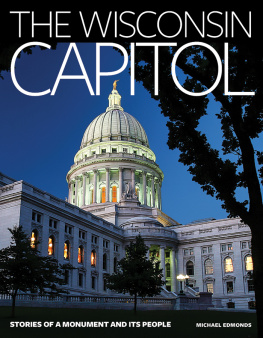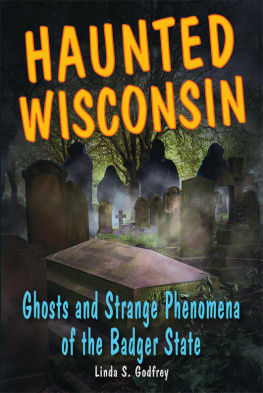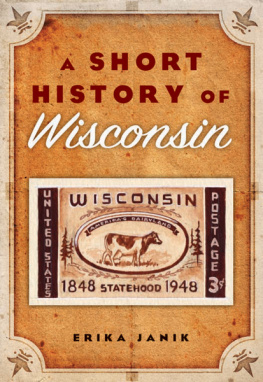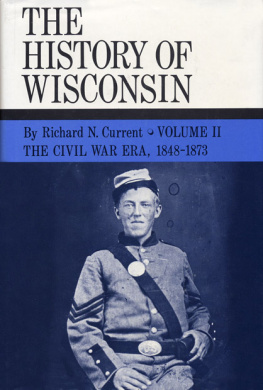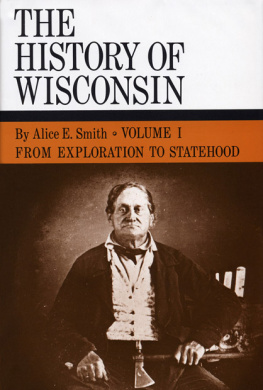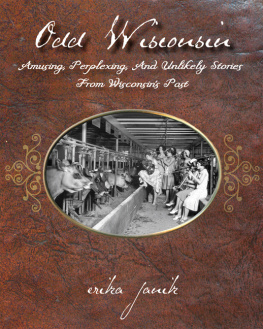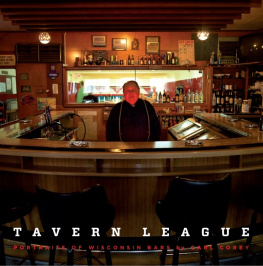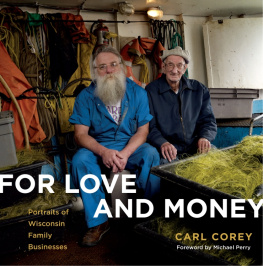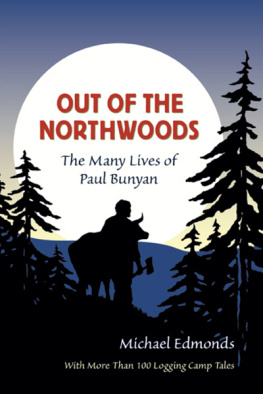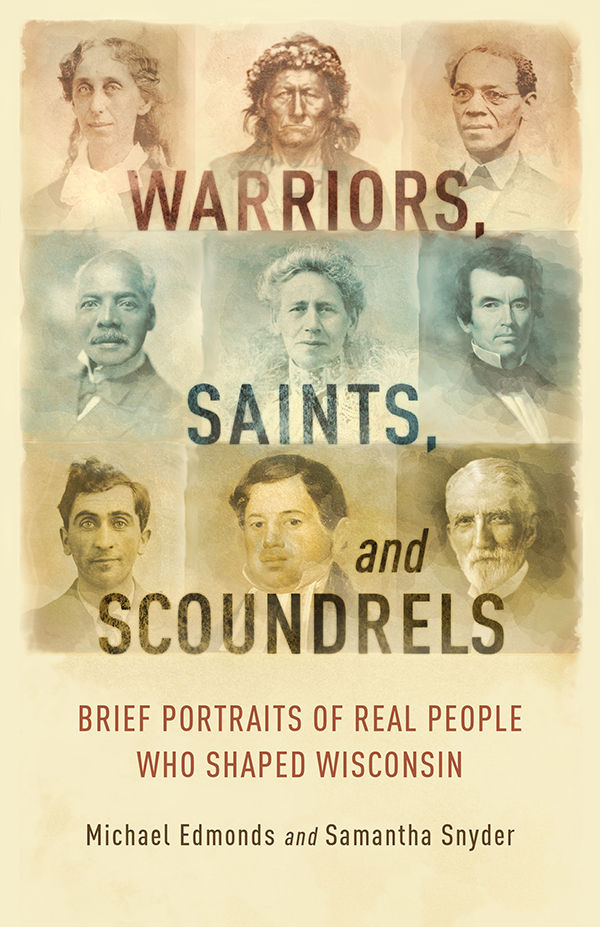Warriors, Saints, and Scoundrels
WARRIORS,
SAINTS,
and
SCOUNDRELS
Brief Portraits of Real People
Who Shaped Wisconsin
Michael Edmonds
and
Samantha Snyder
WISCONSIN HISTORICAL SOCIETY PRESS
Published by the Wisconsin Historical Society Press
Publishers since 1855
The Wisconsin Historical Society helps people connect to the past by collecting, preserving, and sharing stories. Founded in 1846, the Society is one of the nations finest historical institutions.
Order books by phone toll free: (888) 999-1669
Order books online: shop.wisconsinhistory.org
Join the Wisconsin Historical Society: wisconsinhistory.org/membership
2017 by the State Historical Society of Wisconsin
E-book edition 2017
Publication of this book was made possible in part by a grant from the Alice E. Smith fellowship fund.
For permission to reuse material from Warriors, Saints, and Scoundrels: Brief Portraits of Real People Who Shaped Wisconsin (ISBN: 978-0-87020-792-1 AND e-book 978-0-87020-793-8), please access www.copyright.com or contact the Copyright Clearance Center, Inc. (CCC), 222 Rosewood Drive, Danvers, MA 01923, 978-750-8400. CCC is a not-for-profit organization that provides licenses and registration for a variety of users.
Photographs identified with WHI or WHS are from the Societys collections; address requests to reproduce these photos to the Visual Materials Archivist at the Wisconsin Historical Society, 816 State Street, Madison, WI 53706.
Portions of this book are adapted from material previously published in the Wisconsin State Journal . The essays on Mary Hayes-Chynoweth and Morris Pratt first appeared in a slightly different format in Erika Janiks Odd Wisconsin: Amusing, Perplexing, and Unlikely Stories from Wisconsins Past (Madison: Wisconsin Historical Society Press, 2007).
21 20 19 18 17 1 2 3 4 5
Library of Congress Cataloging-in-Publication Data
Names: Edmonds, Michael, 1952-author. | Snyder, Samantha, author.
Title: Warriors, saints, and scoundrels : brief portraits of real people who shaped Wisconsin / Michael Edmonds and Samantha Snyder.
Description: Madison : Wisconsin Historical Society Press, 2017.
Identifiers: LCCN 2016034792 (print) | LCCN 2017002258 (ebook) | ISBN 9780870207921 (paperback) | ISBN 9780870207938 (ebook) | ISBN 9780870207938 (Ebook)
Subjects: LCSH: WisconsinBiography. | BISAC: HISTORY / United States / State & Local / Midwest (IA, IL, IN, KS, MI, MN, MO, ND, NE, OH, SD, WI).
Classification: LCC F580 .E36 2017 (print) | LCC F580 (ebook) | DDC 977.5dc23
LC record available at https://lccn.loc.gov/2016034792
Contents
Names and dates give us cold, hard facts, but stories touch our hearts.
True stories about real people make us laugh or sigh or wince, or shake our heads in disbelief. They make us want to learn more. But few of us have time for four-hundred-page biographies. These days, we appreciate bite-sized history that can be consumed in one sitting. The brief narratives in this collection contain everything essential and nothing extra about colorful Wisconsin characters from long ago.
Weve sifted through the Wisconsin Historical Societys immense collections and discovered noteworthy soldiers and priests, criminals and crusaders, loafers, politicians, mystics, inventors, drunks, and oddballsthree centuries of nonconformists from all of Wisconsins regions and walks of life.
Of course, these sketches are too short to do full justice to their subjects. How would your own life look, reduced to five hundred words? So weve recommended sources (mostly available for free on the Web) for further exploration. Enjoy these stories while the tea kettle boils or the bus rolls you to work. Read them in snatches, read them at random, but read them for fun.
Because names and dates are just historys lifeless skeleton. Its flesh and blood are real people like uspeople who struggled, stumbled, and danced across the same landscape that we do, who laughed and cried their way through life and now lie silent beneath our feet. Flip open to any page and meet one.
Long before Robert Frost, Emily Dickinson, or Walt Whitman, American students read the poems of eccentric poet James Gates Percival.
Percival was born in Connecticut and entered Yale at age sixteen. He briefly practiced medicine but soon gave it up due to his excessive timidity. He was so shy that he could hardly face his patients, and when he tried his hand at teaching, his students terrified him, too. In his spare time, he composed poetry. His published poems received rave reviews and were adopted by schools, but didnt pay the bills. During the 1820s, he found work helping to compile Noah Websters famous dictionary and began an in-depth study of geology.
Percival was appointed state geologist of Connecticut in 1835, and for the next seven years he examined every square mile of the state. Following this appointment, he spent years in penniless seclusion in a New Haven house that he deliberately built without a front door. Over-learned and lacking in practical judgment, according to a friend, Percival lived for years in abject poverty, shut off from the world. Neighbors thought he was insane and had no idea of his literary and scientific achievements.
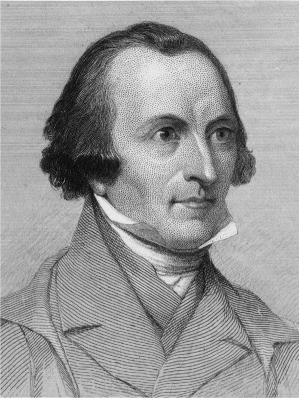
James Gates Percival in middle age WHI IMAGE ID 45760
Then, in 1853, Percival received a contract to inspect Wisconsin mines, which led to his selection as state geologist of Wisconsin. During the 1850s, he traveled around the state and descended into more than two hundred mines. Residents who encountered him, with his head bent, his eye cast downward, and with... his aspect of poverty, almost of squalor, called him Old Stone-Breaker. When he wasnt in the field, he resumed a hermits life in Madison. If he ventured outsidein a tattered grey coat with trousers patched by himselfit was usually to settle silently in the Wisconsin Historical Society library.
By that time, he had renounced poetry, and he told the librarian he wished hed never written any poems. But when he once stopped at a log cabin in southwestern Wisconsin and a schoolboy recited some of his verses, he was deeply touched. Percival died on May 2, 1856, in Hazel Green, Wisconsin, and was buried there in an unmarked paupers grave. Though he was often too poor to buy food, he left behind a library that sold for twenty thousand dollars when his estate was liquidated.
Learn More: Eulogies on James Gates Percival, Wisconsin Historical Collections 3 (1857): 66; O. D. Brandenburg, James Gates Percival, Sleeping at Hazel Green, Eccentric Genius... Madison Democrat , August 15, 1920.
In 1866, at the tender age of eighteen, Wisconsin-born artist Lavinia Vinnie Ream was commissioned by the US government to carve a sculpture of President Abraham Lincoln. She was the first woman and youngest person ever granted such an opportunity.
Ream was born in 1847 in Madison, where her parents were among the citys first settlers. They built a small cabin near the site of the future state capitol, and she and the city grew up together. People called Ream a child prodigy and untutored genius, remembering her as an ambitious, confident girl.
In 1861, her family moved to Washington, DC. She worked as a clerk in the dead letter office of the US Post Office, visited wounded soldiers at hospitals, sang at churches, and collected medical supplies for the US Sanitary Commission. In Washington, she also met Clark Mills, a prominent sculptor, and her art career began to flourish. She apprenticed in Millss studio and was often commissioned to create busts of prominent residents. Thats when she got the idea of sculpting President Lincoln, and in 1864 he agreed to sit for her.



